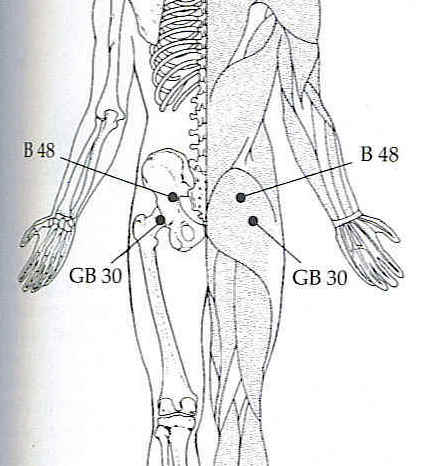2 Points For Eliminating Lower Back and Hip Pain
/Lower back and hip pain are common complaints among older adults with a wide range of underlying causes. Legs aside, the hips are the most important weight-bearing parts of the body that provide support and allow us to stand upright and move in all directions. However, lift something that is too heavy, twist the wrong way, strain your back muscles and you are in a world of pain. The pain can be simply a dull throbbing, a burning sensation or tingling that continues over a period of time. Or it could be sharp waves of pain pulsating upon movement. When looking for a way to treat the momentary pain on the spot, many people consider alternative medicine.
According to WebMD, acupressure is the ancient Chinese medical practice used “to promote relaxation and wellness and to treat disease.” It is often thought of as simply acupuncture without the needles. Acupressure is the application of pressure, or massage, of key pressure points on your body to help restore health and balance. Hundreds of acupressure points exist within the human body, and although some of the benefits of the points overlap, each point accomplishes something unique, too.
Acupuncture Points for Lower Back Pain Relief
There are 2 acupuncture points that can help you relieve your lower back pain. They are B48 and GB30, as presented on the image below.
Massaging the GB30 is supposed to lessen hip pain, pain in the buttocks, lower back pain, sciatica, muscle spasms and hip joint pain. It also helps in relieving leg pain, lumbar pain and hemiplegia.
Massaging B48 should lessen hip pain, sciatica and pain in the sacral area. Take note that often the B48 points can be very sensitive and inflamed if you are already experiencing back pain, and care should be used when massaging them. Massaging B48 is also helpful in treating diarrhea and diabetes.
Locating the GB30 and B48 points on the body
GB30 is also known as the Jumping Round point. This point can be located by moving three-quarters into gluteal muscles from the middle of the sacrum. It is located between the sacrum and greater trochanter.
B48 is a local acupressure point for hip pain. In some literature it is mentioned as B53. This point is also known as the Bladder Vitals and it is located 3.0 chon to the side of the sacrum, right in the middle of the gluteal muscles of the buttocks.
What Else to Do to Reduce Lower Back Pain?
When dealing with lower back pain it’s often useful to apply ice pack on the affected area to lessen the inflammation. Continuing to move around helps prevent tightening of the muscles and muscle spasms.
Stretching and exercising the muscles around the sore area, like we demonstrate in this article, is a great way to strengthen them and can help in reducing and preventing lower back pain. Avoid wearing high heels (above an inch) as this will improve your posture and your lower back condition. Tummy sleeping and lifting incorrectly may also contribute to your back pain.
Sometimes light stretching and a little massage may be all that’s necessary to alleviate the discomfort you experience.
This article originally appeared on www.thehealthsciencejournal.com











![Self-regulation “control [of oneself] by oneself"](https://images.squarespace-cdn.com/content/v1/55563e14e4b01769086817cb/1542845645966-PO2HGKF5JLUBM45UIWQ3/wee-lee-790761-unsplash.jpg)





















